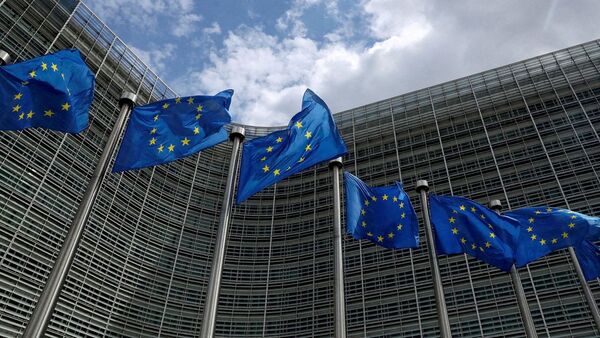
Europe appears to be headed for a recession if it’s not there already, and matters are worse if you ask: Who will save it this time? Maybe Europe will have to fix itself.
Europe appears to be headed for a recession if it’s not there already, and matters are worse if you ask: Who will save it this time? Maybe Europe will have to fix itself.
Previous dismal estimates for gross domestic product in the second quarter of the year were revised down to abysmal Thursday. The European Union had zero growth quarter-on-quarter, and 0.4% year-on-year.
Hi! You’re reading a premium article
Previous dismal estimates for gross domestic product in the second quarter of the year were revised down to abysmal Thursday. The European Union had zero growth quarter-on-quarter, and 0.4% year-on-year.
Most worrying is Germany, which has contracted or stood still since the last three months of 2022 and seems all but certain to tip into recession. Industrial output has fallen all summer, in a worrying way.
Some energy-intensive industries such as chemicals and pharmaceuticals appear to be recovering from the energy-price shock that started last year. But the summer’s industrial slowdown was driven by falling orders of investment goods such as machine tools, notes Holger Schmieding of Berenberg. This suggests a broader decline in confidence at home and in many of Germany’s export markets.
In previous European downturns, foreigners were ready to help. This has taken the form of a booming U.S. economy or a roaring Chinese market—or both—that gave Europe an export-and-investment boost.
Maybe not this time. Chinese growth is in a slump of its own. It is undergoing a repricing of inflated assets such as property that means a recovery may be slow. Even if Beijing does respond with credit-easing stimulus for which many foreigners long, Europe is unlikely to be as big a beneficiary. When Chinese households and companies buy consumer goods or business equipment, these days President Xi Jinping prefers that they buy Chinese.
The U.S. might offer Europe more relief, but maybe not as much as usual. Much of current U.S. growth is the result of government spending, and subsidized private investment, in earmarked projects or industries.
European companies are struggling to profit from this owing to Buy American provisions built into the laws, such as preferential tax credits for U.S.-manufactured electric vehicles. This could still provide a profit boost to European companies able to build factories in the U.S. But it won’t create European export jobs.
That leaves European leaders to fend for themselves, and they don’t know what to do. The European Union is trying to pursue its own version of America’s green subsidy bonanza but lacks the financial resources. This may be just as well since Europe doesn’t need more statist distortions than it already has.
Berlin’s coalition government recently proposed a series of tax and regulatory reforms aimed at stimulating business investment. But the scale is too modest for the moment and manufacturers remain trapped in a politician-imposed energy crisis. Spain could get a supply-side government under the center-right Popular Party, but it may also be stuck with incumbent Socialist Pedro Sanchez as Prime Minister for a while longer.
The global economy needs a Europe able to grow for itself, not least to finance the welfare states and increased defense spending its countries will need to deal with new global threats. The race is on to see which politicians and voters on the continent can return to the pro-growth policies their democracies need.






